I suggest trying them when they are feeding over water or a field because the motion is limited to mostly horizontal at a steadier speed. 1/3200 shutter (thanks @Steve) works great!I need advice. How the heck do you get a picture of a swallow in flight? I tried to follow them until I felt like one of the three stooges and was dizzy to boot. All suggestions will be appreciated.
You are using an out of date browser. It may not display this or other websites correctly.
You should upgrade or use an alternative browser.
You should upgrade or use an alternative browser.
Shooting Swallows
- Thread starter bcaress
- Start date
If you would like to post, you'll need to register. Note that if you have a BCG store account, you'll need a new, separate account here (we keep the two sites separate for security purposes).
raptor photo
Well-known member
Thanks! I did see that post, just didn't realize it was you too. Your swallow shots are incredible!Yes, I've shot swallows with A9, A9II, A1, A7RIV, A7RV, Canon R5 and R3. Also D500 and D850.
Back on page 1 of this thread I did a post showing an image from each of those cameras....a lot of gear can get the job done, they just each take different techniques. Some are hindered more by AF, some more by VF stutter/blackout (A7RIV and V and R5).
I found the easiest cameras to get the job done were the three stacked sensor Sony cameras (A9, A9II and A1) and the Nikon DSLRs (D500/D850). Canon R3 is pretty good also. R5 and Z9 are similar...R5 hindered by its slideshow effect and Z9 by the issues I discussed earlier. A7RIV and A7RV are really hindered by the blackout/laggy EVF and lack of FPS.
Alistair
Well-known member
Swallows are so challenging but such fun to shoot. The great reward is to capture that which is otherwise unseeable. By way of consolation, the Swallow doesn't always make the "shot" either:

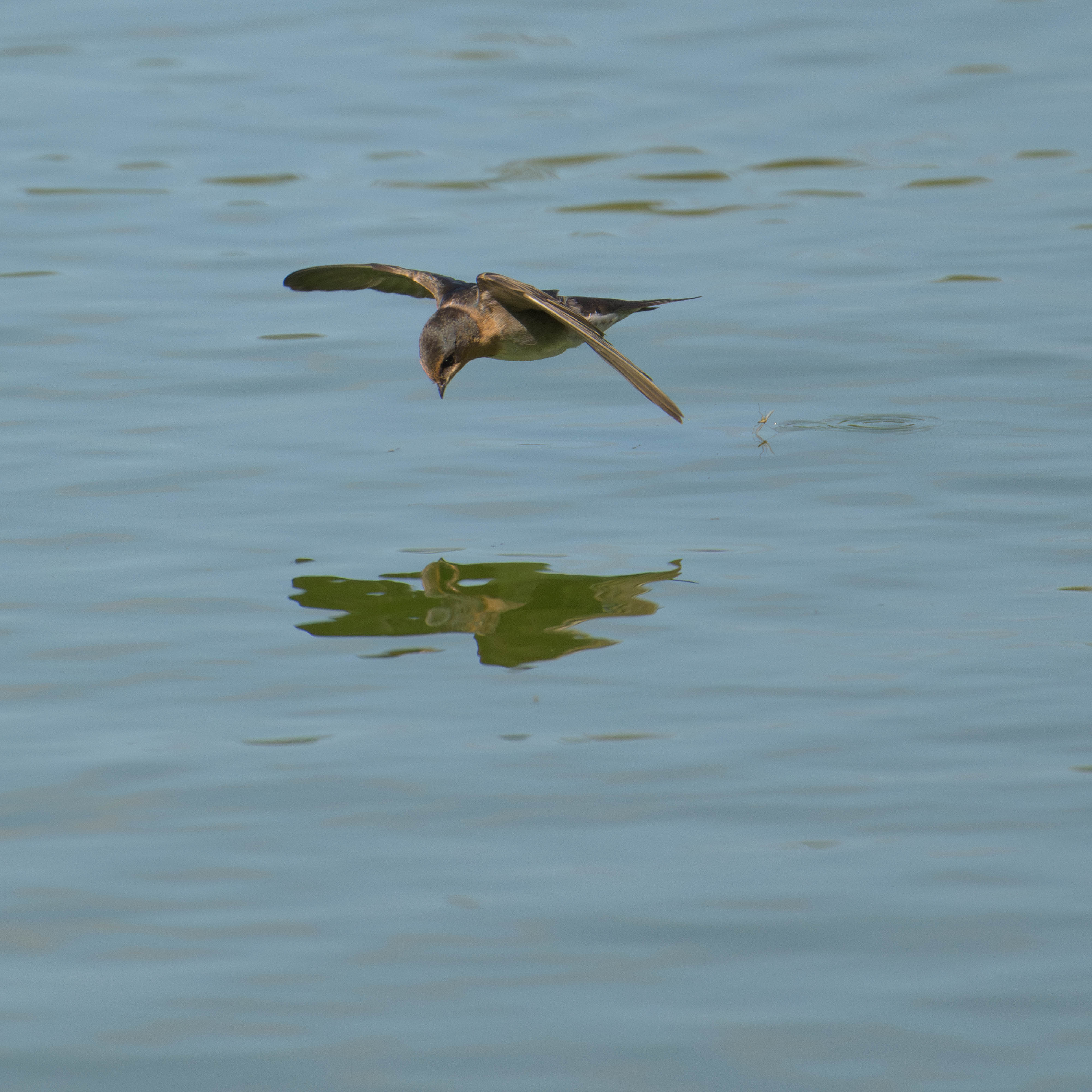
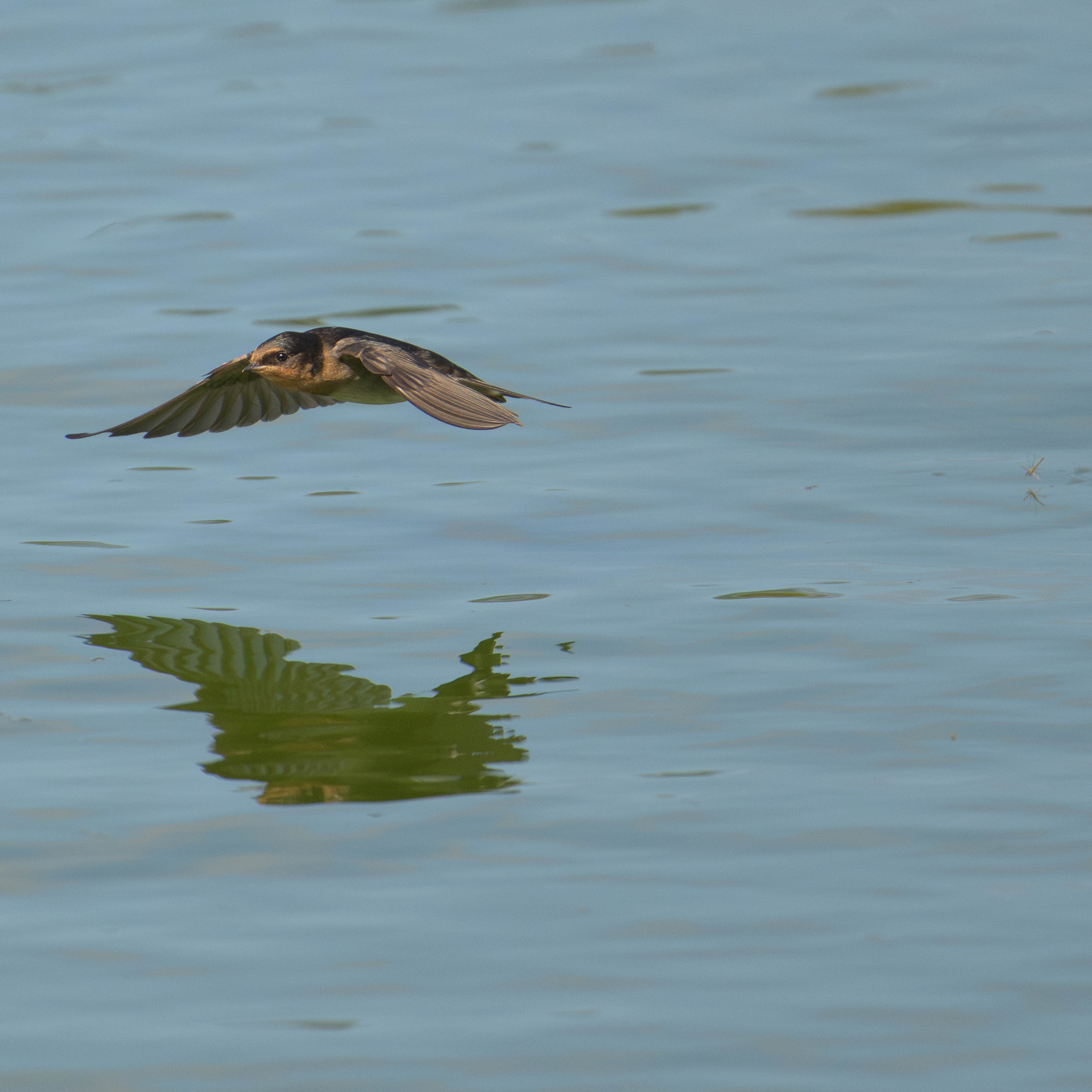
And occasionally mistakes its target. Indeed if there is a wider "story" to tell, a looser crop is acceptable IMO:

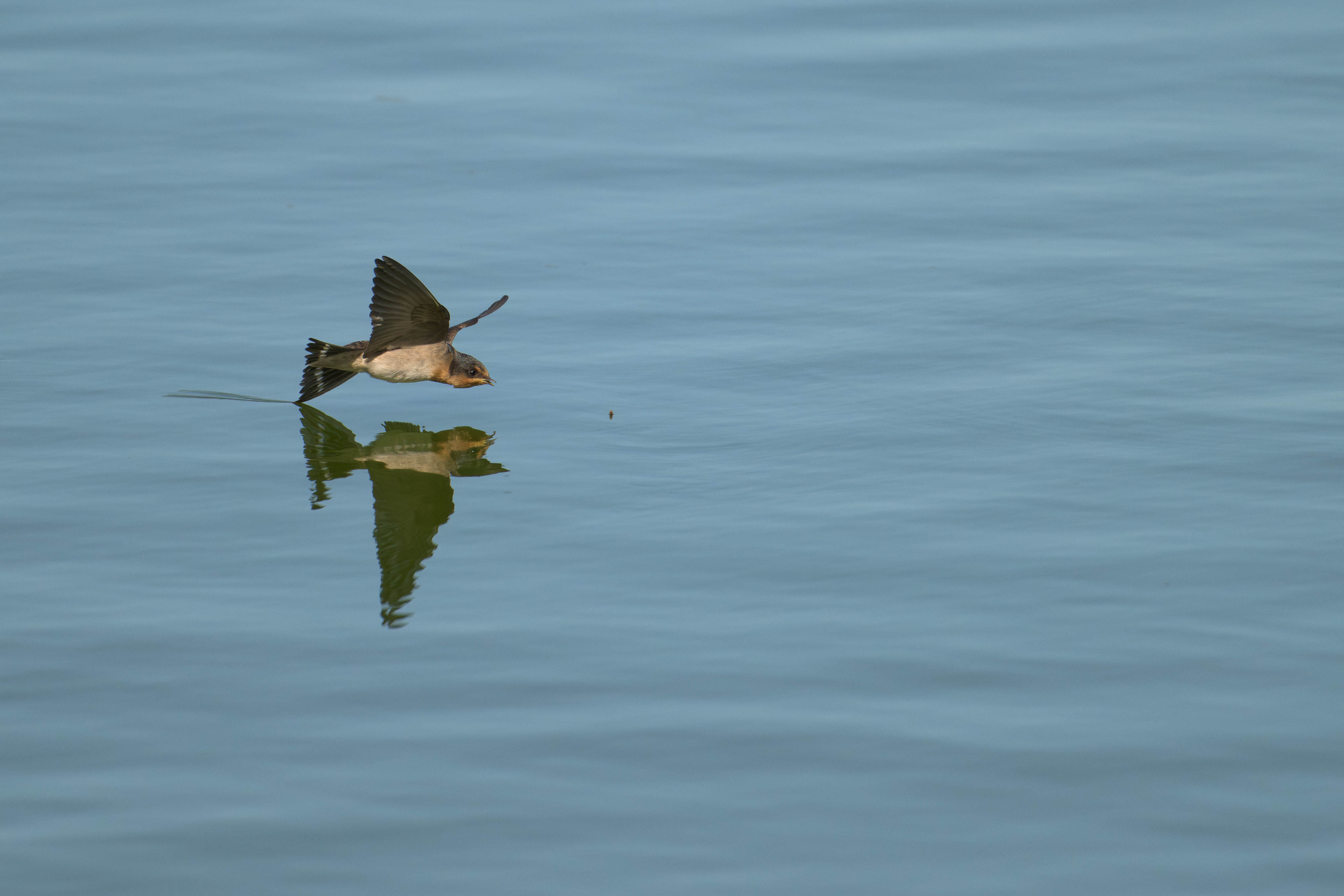
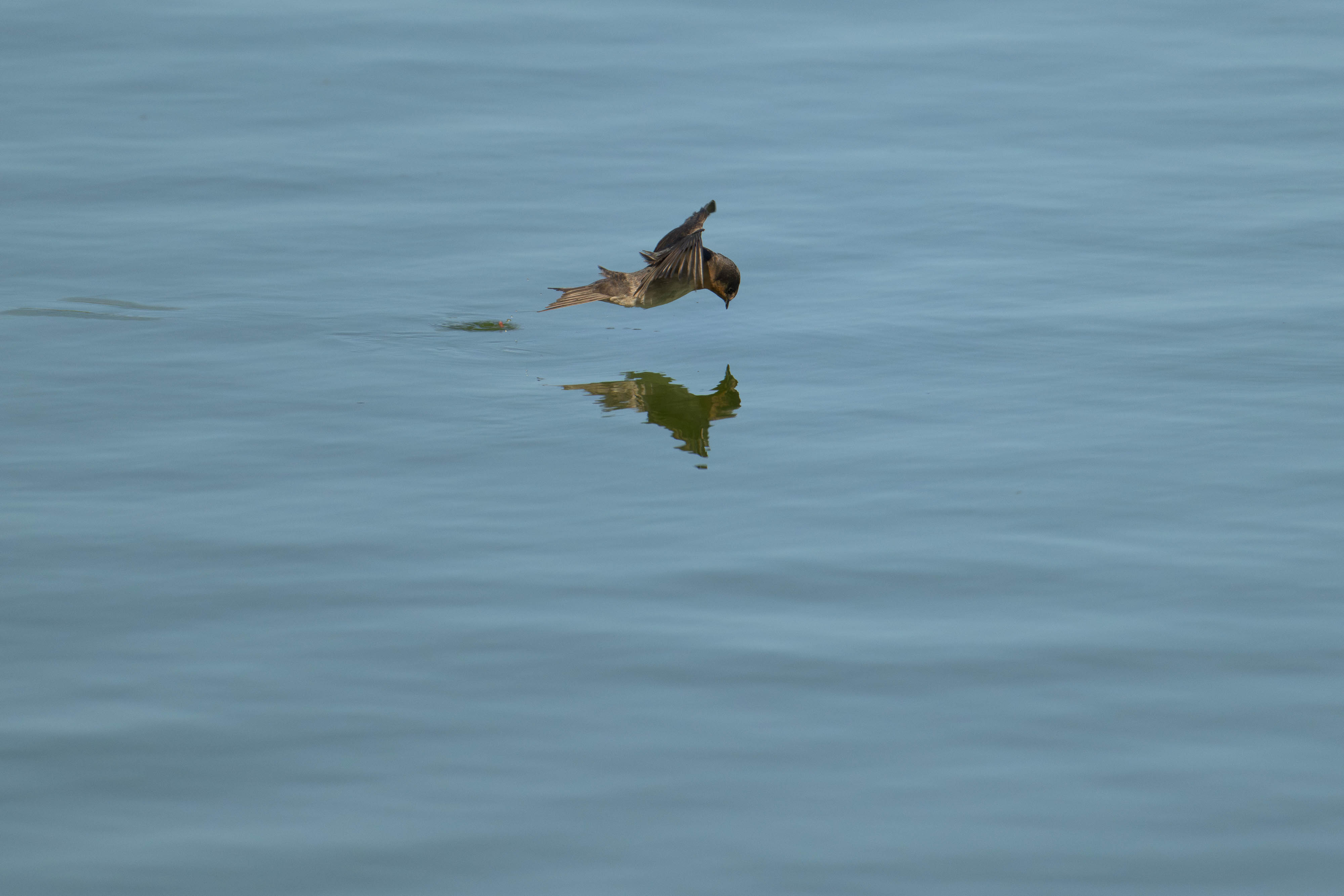

Also:
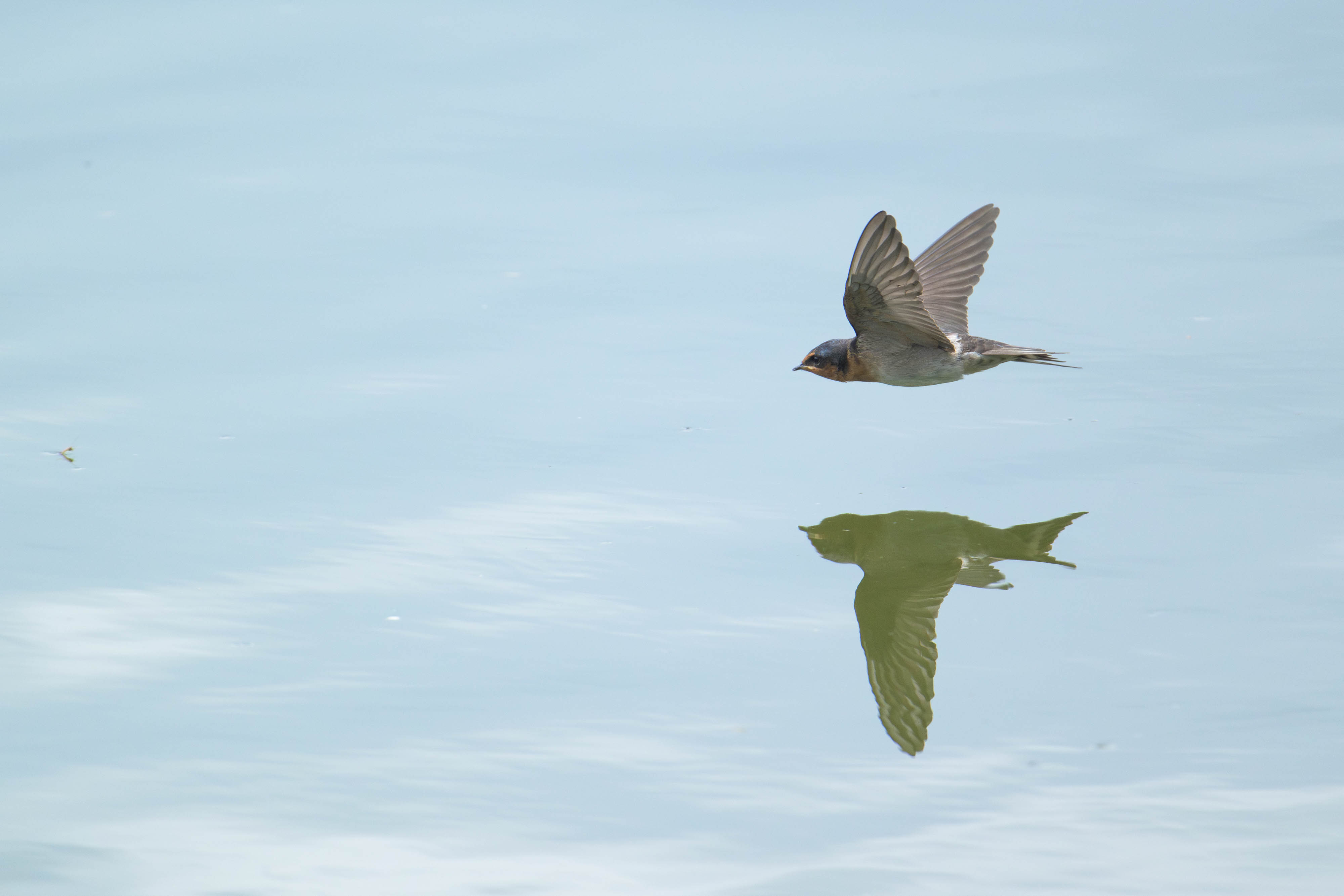
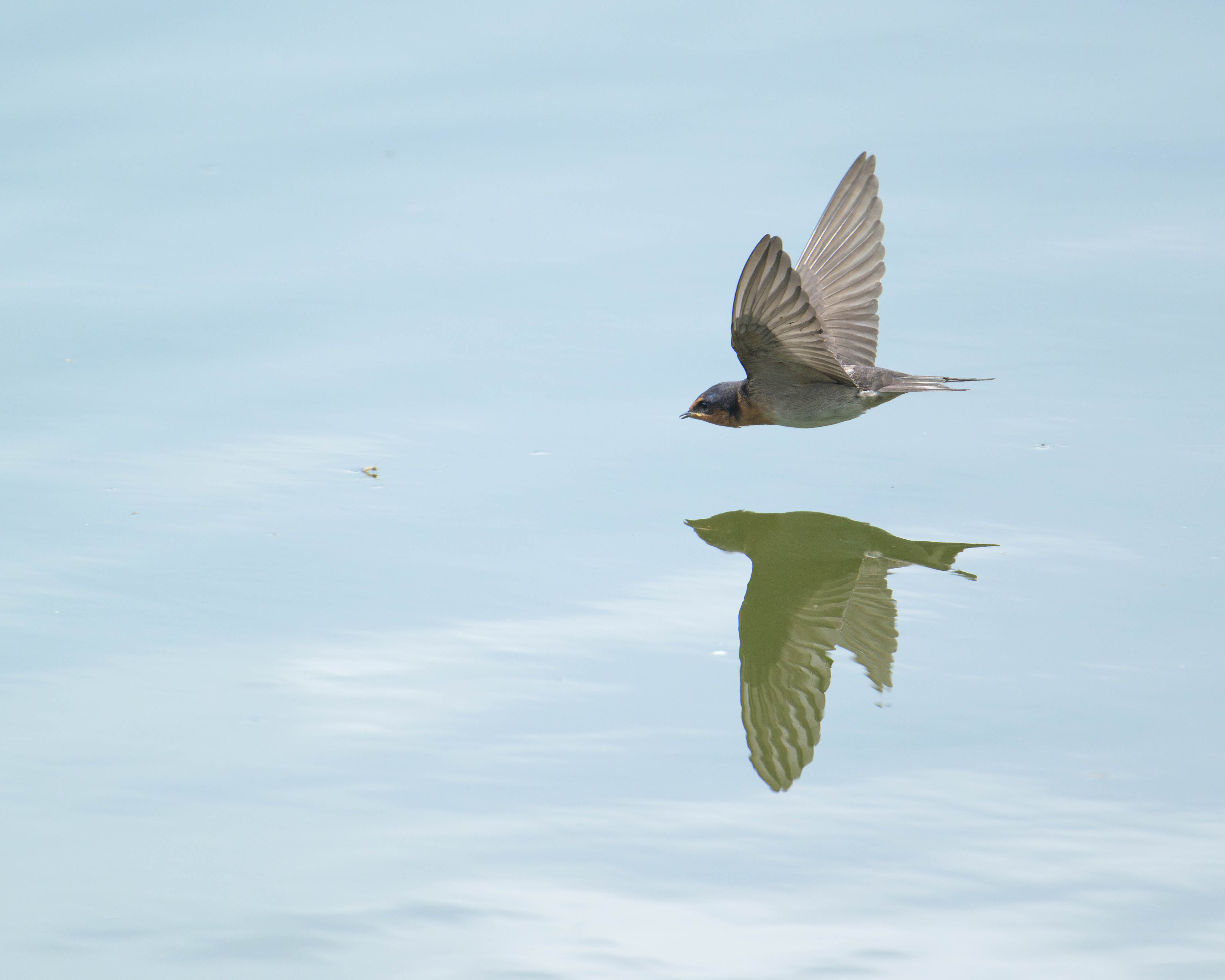
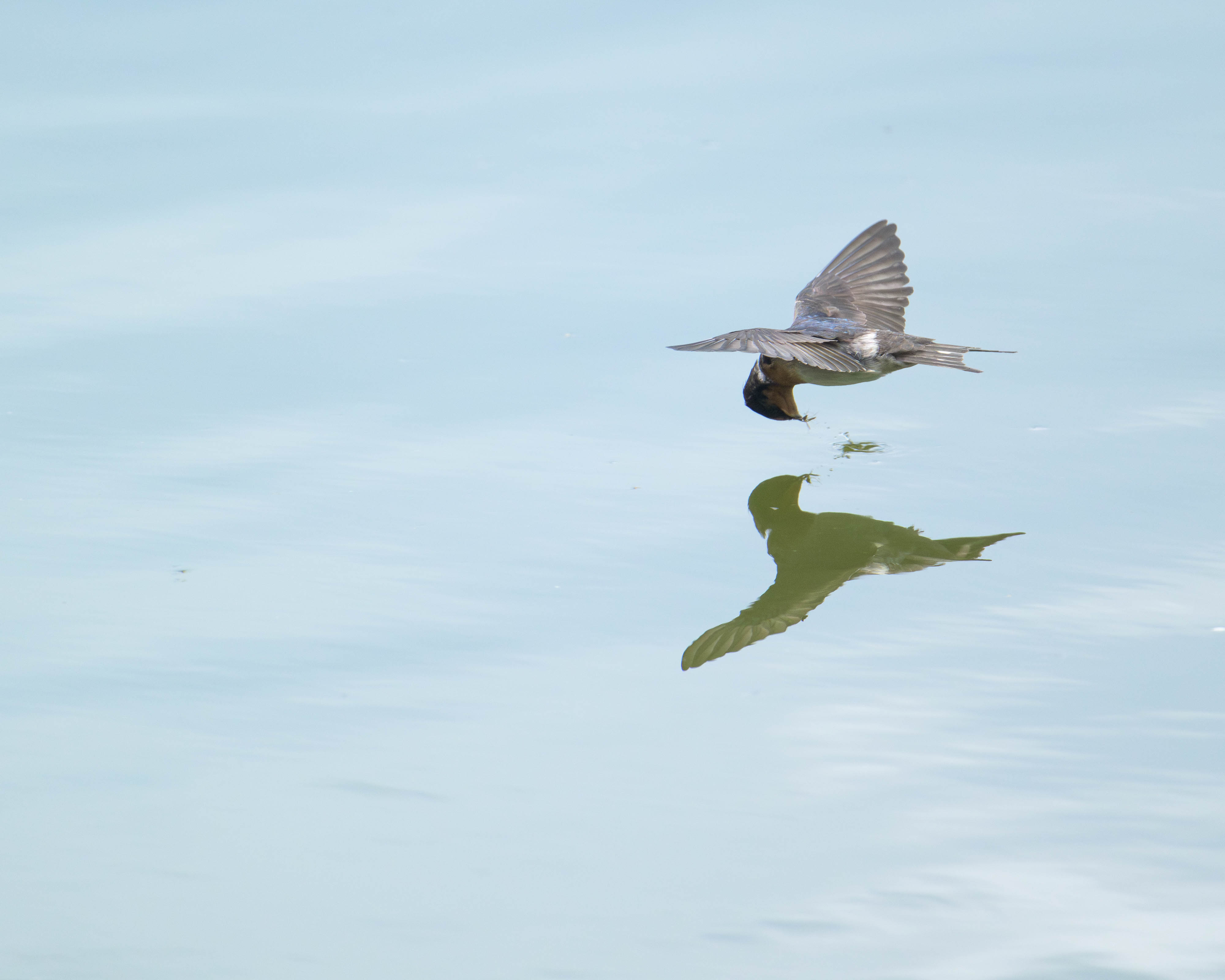

My 2c on shooting these subjects:
- Shoot in good light
- Keep the sun at your back
- Shoot in wind if possible as it will slow the little beggars down some
- Don't expect a flight path remotely predictable. They turn on a dime at speed, sometimes dipping their tail into water to perform a handbrake turn when hunting insects on a body of water. This makes a charming image of itself
- Get into a "high speed" mindset. You are chasing them with your lens and trying to keep them in frame and in focus for a fraction of a second. The duration of the four frame sequences above is only 1/5 of a second (shot at 20 FPS) but that is all you need. You won't know what you have captured until you replay the sequence
- They are great to shoot as a video subject too if the AF tracking speed of your camera is fast when shooting video
- The higher FPS, the better. 30FPS and higher is ideal and the lower the FPS then the lower the probability of hitting the perfect timing.
- Start off with a relatively short focal length, 400mm on FF is good. This will get you accustomed to tracking at speed but you will find you will have to crop in post deeper than would like. Increase focal length as you get used to it. Modern well balanced primes which are not front-heavy makes light easier and more agile.
Good luck and enjoy the process.



And occasionally mistakes its target. Indeed if there is a wider "story" to tell, a looser crop is acceptable IMO:




Also:




My 2c on shooting these subjects:
- Shoot in good light
- Keep the sun at your back
- Shoot in wind if possible as it will slow the little beggars down some
- Don't expect a flight path remotely predictable. They turn on a dime at speed, sometimes dipping their tail into water to perform a handbrake turn when hunting insects on a body of water. This makes a charming image of itself
- Get into a "high speed" mindset. You are chasing them with your lens and trying to keep them in frame and in focus for a fraction of a second. The duration of the four frame sequences above is only 1/5 of a second (shot at 20 FPS) but that is all you need. You won't know what you have captured until you replay the sequence
- They are great to shoot as a video subject too if the AF tracking speed of your camera is fast when shooting video
- The higher FPS, the better. 30FPS and higher is ideal and the lower the FPS then the lower the probability of hitting the perfect timing.
- Start off with a relatively short focal length, 400mm on FF is good. This will get you accustomed to tracking at speed but you will find you will have to crop in post deeper than would like. Increase focal length as you get used to it. Modern well balanced primes which are not front-heavy makes light easier and more agile.
Good luck and enjoy the process.
Kadaver81
Member
What type of Lens and camera did you use, and what settings?Swallows are so challenging but such fun to shoot. The great reward is to capture that which is otherwise unseeable. By way of consolation, the Swallow doesn't always make the "shot" either:
My 2c on shooting these subjects:
- Shoot in good light
- Keep the sun at your back
- Shoot in wind if possible as it will slow the little beggars down some
- Don't expect a flight path remotely predictable. They turn on a dime at speed, sometimes dipping their tail into water to perform a handbrake turn when hunting insects on a body of water. This makes a charming image of itself
- Get into a "high speed" mindset. You are chasing them with your lens and trying to keep them in frame and in focus for a fraction of a second. The duration of the four frame sequences above is only 1/5 of a second (shot at 20 FPS) but that is all you need. You won't know what you have captured until you replay the sequence
- They are great to shoot as a video subject too if the AF tracking speed of your camera is fast when shooting video
- The higher FPS, the better. 30FPS and higher is ideal and the lower the FPS then the lower the probability of hitting the perfect timing.
- Start off with a relatively short focal length, 400mm on FF is good. This will get you accustomed to tracking at speed but you will find you will have to crop in post deeper than would like. Increase focal length as you get used to it. Modern well balanced primes which are not front-heavy makes light easier and more agile.
Good luck and enjoy the process.
Alistair
Well-known member
I use Z9 with 400/4.5 and 1.4x .What type of Lens and camera did you use, and what settings?
Min shutter speed of 1/4000, wide open, auto ISO manual. Auto area AF with animal subject detection.
foxysport
Active member
Unbelievable stuff guys, congrats! All I can see is shadows flashing by if I point the camera.
foxysport
Active member
I suppose the majority of the photos here are above some body of water, be it a pond or a lake I'm assuming. I do not think I have one in mind I should go to in the South of England to see those. On the contrary, I just have them flying around at about 70-100 feet up at crazy speeds above my head. If I'm correct, _that_ would be truly challenging because we're talking something like half a second for a 90 degrees body swivel to follow those right above. I do not think anyone here is actually doing this last thing as opposed to just shooting mostly horizontally from a reduced angle?
Alistair
Well-known member
Yes, I think it would be very difficult to shoot these in the open environment you describe.I suppose the majority of the photos here are above some body of water, be it a pond or a lake I'm assuming. I do not think I have one in mind I should go to in the South of England to see those. On the contrary, I just have them flying around at about 70-100 feet up at crazy speeds above my head. If I'm correct, _that_ would be truly challenging because we're talking something like half a second for a 90 degrees body swivel to follow those right above. I do not think anyone here is actually doing this last thing as opposed to just shooting mostly horizontally from a reduced angle?
arbitrage
Well-known member
Actually shooting them up in the air against sky background is some of the easiest shooting. I don't like those types of shots so I don't ever aim up when they are overhead anymore. Way back when I first tried swallows in flight (probably with 7DII or 1DX) I only was able to get shots shooting overhead against sky.I suppose the majority of the photos here are above some body of water, be it a pond or a lake I'm assuming. I do not think I have one in mind I should go to in the South of England to see those. On the contrary, I just have them flying around at about 70-100 feet up at crazy speeds above my head. If I'm correct, _that_ would be truly challenging because we're talking something like half a second for a 90 degrees body swivel to follow those right above. I do not think anyone here is actually doing this last thing as opposed to just shooting mostly horizontally from a reduced angle?
All my recent swallow in flight shooting is either near a body of water or over fields. I also shoot them from my kayak as they skim the water like this shot attached below.
The environment you find the swallows in does make a huge difference in how difficult they are to shoot. I also find you need the numbers to at least be 20+ in order to have enough birds continuously coming through your shooting area to give one enough chances for a meaningful session. I prefer shots where the swallows have come up off of the water and are more at eye level over a green/brown type backgrounds. I only like water shots if the swallow is actively picking off a bug or doing a water dip. But some cameras (like Z9) have such a difficult time shooting them over the green/brown backgrounds that I do take more shots over water.
From the kayak with A1 and either 600GM or 400GM....
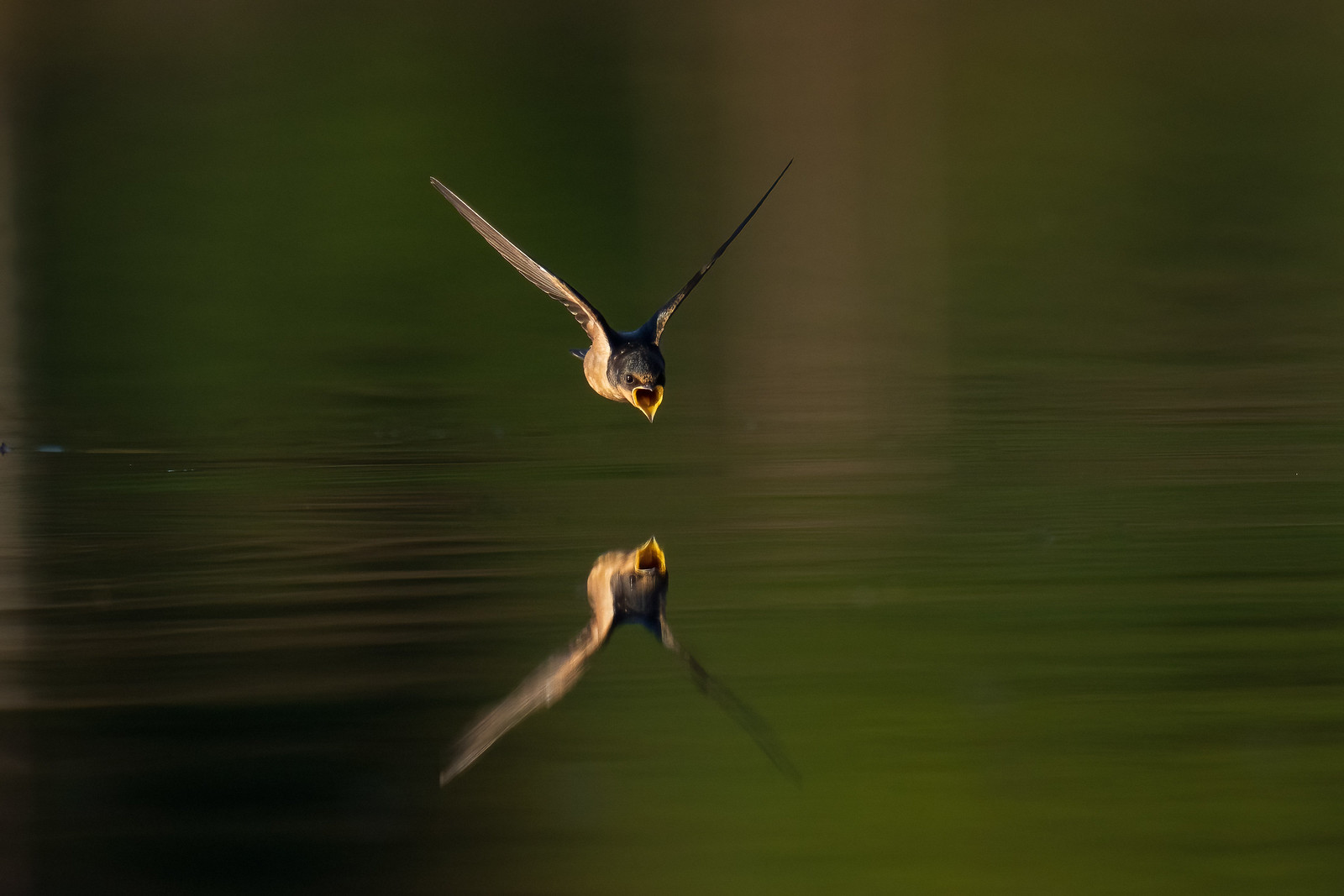 July 30, 2022.jpg by Bird/Wildlife Photos, on Flickr
July 30, 2022.jpg by Bird/Wildlife Photos, on Flickr August 12, 2022-2.jpg by Bird/Wildlife Photos, on Flickr
August 12, 2022-2.jpg by Bird/Wildlife Photos, on Flickr August 12, 2022.jpg by Bird/Wildlife Photos, on Flickr
August 12, 2022.jpg by Bird/Wildlife Photos, on Flickr August 12, 2022-2.jpg by Bird/Wildlife Photos, on Flickr
August 12, 2022-2.jpg by Bird/Wildlife Photos, on Flickrfoxysport
Active member
@arbitrage How does this work, shooting upwards? What is the approach in that case? I've been trying with Z9+600mm 4fE. Often, I cannot even see a shadow of it as it just immediately disappears to a completely different place across the sky dome. Secondly, even if I get initial focus, it is all smudged. Not to mention, the distance is like I said at least 30 meters so even with a 600mm, it is a very small subject with no discernible structure.
Update: checked my failed photos, the SS was 1/1250 s, obviously laughable. Mistake #1.
Update: checked my failed photos, the SS was 1/1250 s, obviously laughable. Mistake #1.
Last edited:
pwaring
Well-known member
As a strange co-incidence I ended up enjoying this thread in the last week at the same time I was having my first good swallow encounter and these posts were my encouragement to see if I could get anything. I'd never been very close to any before but then I had a couple mating in front of me. We ended up in a couple of hides that had a small number nesting in them. The opportunities didn't feel great due to the lighting and the general flight paths of the swallows but I felt like I might as well spend a few hours getting some experience so that I'd be better equipped for it in future. I stole the 400 4.5 off my wife and used the 1.4x on top of that with my Z9. I got various in-flight shots out of it (more than I expected) but the distance was hard and the backgrounds are an absolute lottery where I was shooting from.
I definitely recommend having a go though to anyone who has them nearby. I'll be trying to find some closer to me though in a good spot so that I can try and get more practise in and results closer to some of the stunning stuff in this thread.



I definitely recommend having a go though to anyone who has them nearby. I'll be trying to find some closer to me though in a good spot so that I can try and get more practise in and results closer to some of the stunning stuff in this thread.
You can only see EXIF info for this image if you are logged in.
You can only see EXIF info for this image if you are logged in.
You can only see EXIF info for this image if you are logged in.
I have recently tried to photograph tree swallows in flight. The comparison to trying to photograph bullets is pretty good, IMO. I am not sure I have much more to offer on the subject compared to what others have posted. What limited success I have had can be summed up in these points.
- Use a high shutter speed (1/3200 or 1/4000 or faster).
- Shoot near a common flight path. Swallows I have seen tend to use paths covering roughly the same area.
- Try tracking them when they are far away, and wait until they get closer to shoot. Avoid shooting when the bird is too far away.
- Experiment with different AF areas. I used to use Group AF for everything with my D500. I have been trying other areas like D153. Worth a try.
- Use a lens with fast AF. My Sigma 100-400mm lens takes great photos, but seemed to struggle with birds flying towards me. I recently picked up a used AF-P 70-300mm f/4.5-6.3 DX lens at a good price, and seem to be getting a higher hit rate with that lens.
- Take lots and lots of photos. The Ch drive used in short bursts can help get one or two decent photos. But be selective about when you press the shutter button.
- Be prepared to crop at least a little bit.

